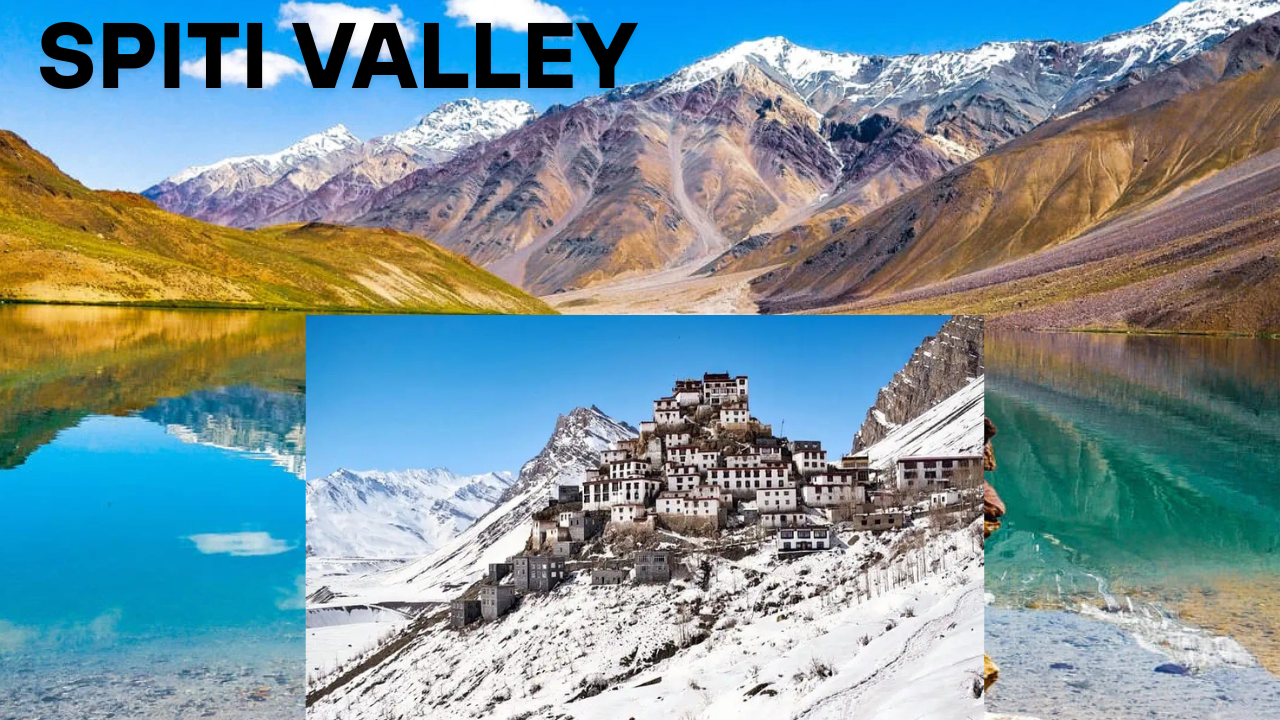Dreaming of going to Spiti Valley in Monsoon? You’re not alone. With its emotional scenes, religious communities roosted on cliff edges, and winding Himalayan streets, Spiti Valley in Monsoon is a genuine adventurer’s heaven. But come storm, things get a small… interesting.
Let’s be legitimate traveling to Spiti Valley in Monsoon amid the stormy season isn’t for the faint-hearted. With the downpours come unusual climate, dangerous streets, and a genuine hazard of avalanches. Sounds frightening? Possibly. But with the right data and shrewd arranging, your storm travel to Spiti can be not fair secure but unforgettable.
Understanding Spiti’s Interesting Geography
Spiti Valley in Monsoon isn’t your normal mountain goal. Tucked absent in Himachal Pradesh, it’s a cold leave that sits over 12,000 feet over ocean level. The territory is rough, rough, and crude fair how nature intended.
Interestingly, Spiti gets distant less precipitation than other parts of Himachal. Whereas adjacent ranges like Manali or Shimla get soaked amid storm, Spiti remains generally dry. Sounds like a alleviation, right? Well, it’s not that simple.
How Much Rain Does Spiti Valley Truly Get?
Here’s where it gets dubious. Spiti Valley in Monsoon itself gets exceptionally light precipitation, frequently fair scattered showers. But the courses driving to Spiti like from Manali or Shimla are where the genuine rain dramatization unfolds.
Manali to Spiti (by means of Rohtang & Kunzum Pass): Overwhelming rainstorm downpours can trigger avalanches and street closures.
Shimla to Spiti (by means of Kinnaur): This extend, particularly close Kinnaur, is infamous for avalanches amid July and August.
So whereas Spiti might not be getting splashed, getting to Spiti amid rainstorm is where you’ll require to keep your eyes on the skies.
Monsoon Months: Timing It Right
The rainstorm in Himachal Pradesh ordinarily runs from late June to early September. If you’re arranging to visit Spiti amid this window, the most secure wagered is late Eminent to early September, when the most noticeably awful of the downpours have passed but the streets are still open.
Landslides in Rainstorm: The Unforgiving Reality
Let’s not sugarcoat it avalanches are a genuine danger amid rainstorm. Particularly on the Kinnaur course, where sheer cliffs and free soil combine with overwhelming rain to make perilous situations.
What does this cruel for you?
You may confront long delays.
Certain courses may be totally blocked.
Safety dangers increment, particularly if you’re driving yourself.
If you’re not comfortable with a few instability and a bit of experience, rainstorm may not be your season for Spiti.
Can You Still Visit Spiti Amid Monsoon?
Yes, but with caution.
Many experienced travelers and picture takers adore going by Spiti amid storm for the grouchy skies, rich scenes, and less sightseers. The mountains see greener, streams swell with life, and the valleys take on a strange beauty.
But keep in mind: This is not the time for a casual street trip. Be arranged, both rationally and logistically.
Essential Security Tips for Rainstorm Travel in Spiti
Ready to courageous the rainstorm for the adore of Spiti Valley in Monsoon? Incredible! Here are a few security tips you ought to completely keep in mind:
Keep a Buffer Day or Two
Delays due to detours or climate are common. Allow yourself additional time so you’re not hurrying through your journey.
Enlist a Neighborhood Driver or Visit Operator
Local drivers know the streets, the landslide-prone zones, and substitute courses like the back of their hand. It’s worth each penny.
Carry Basic Supplies
Include nourishment, water, additional dress, a control bank, burn, and fundamental medication. You never know when you might be stuck on the road.
Keep Overhauled on Street Conditions
Use neighborhood WhatsApp bunches, BRO (Border Streets Association) upgrades, or Google Maps but don’t depend on innovation alone.
Maintain a strategic distance from Traveling at Night
Visibility drops definitely, and street conditions can be perilous after dim, particularly after a new avalanche or rain.
Waterproof Your Gear
Keep your hardware, records, and dress dry. Zip-locks, rain covers, and dry sacks are your best friends.
What To Anticipate on the Road
Broken streets and mudslides in parts of Kinnaur and Lahaul.
Stream intersections that ended up waterways post-rain.
Construction work abating down the journey.
Unexpected temporary routes due to avalanche clearance.
Sounds seriously? It can be. But for the thrill-seekers, it’s portion of the magic.
Places That Sparkle Amid Rainstorm in Spiti
Despite the challenges, a few spots in Spiti see completely ethereal amid storm. Don’t miss:
Kaza – The fundamental town with energetic cafes and cozy homestays.
Chicham Bridge – Asia’s most elevated bridge, particularly striking with rain-misted views.
Langza, Hikkim & Komic – Modest towns with postcard-worthy backdrops.
Dhankar Lake – The climb is dangerous, but the sees? Heavenly.
When It’s Way better to Put off Your Trip
Let’s be genuine. If you’re: Spiti Valley in Monsoon
Traveling with kids or elderly family
New to high-altitude or off-road travel
Not comfortable with unpredictability
…it might be superior to arrange your trip in May-June or September-October, when the climate is more steady and streets are safer.
Read More: Gluten-Free Panjiri: A Modern Take on a Traditional Delight
Conclusion
Visiting Spiti Valley in Monsoon in the storm is like playing with the components. It’s erratic, a small unsafe, and not continuously comfortable but it too rewards you with crude magnificence that’s difficult to describe.
The key is to travel keen, remain educated, and anticipate the unforeseen. If you go with an open intellect (and a well-packed rucksack), Spiti in storm might fair ended up your favorite unique enterprise.









